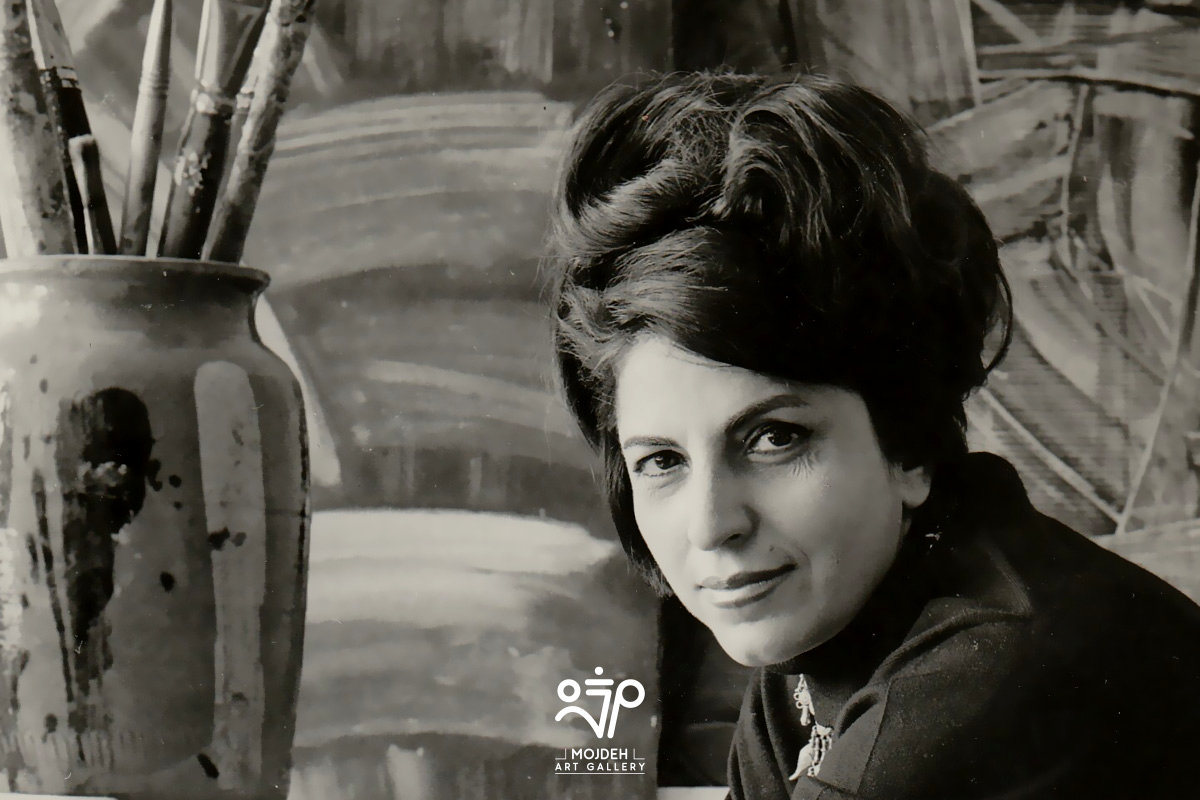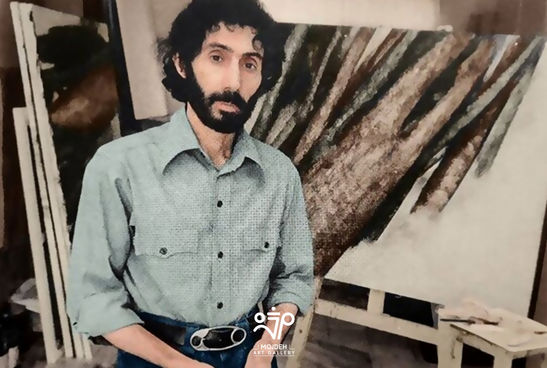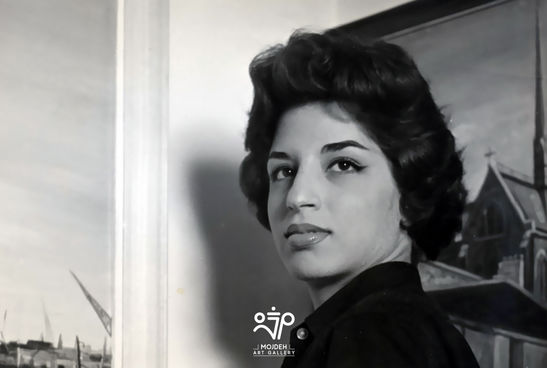Behjat Sadr

Behjat Sadr was born in 1924, and in the 40s she entered the Collage of Fine Arts and pursued painting continuously and professionally in the same decade. Sadr's first working and professional periods began with drawing and a large number of figurative drawings and paintings have been left from this period. From the mid-1950s, Behjat Sadr began her first studies in abstract painting, and her paintings of this period, which began in 1954 and continued until the end of 1959, mostly have color and she combined different colors in an abstract way, although the works of this period has power in color rendering, but it is as if the painter is experimenting and has not yet achieved a personal expression. From the late 1950s to the mid-1960s, Sadr focused more on the color black and abstract expression of this color than any other color. The main substrate of her works and actually her medium of expression is aluminum, and by removing the color and creating space between the colors, she shows a new kind of abstract expression. During this period, Sadr exhibits her shutters, which are famous for their kinetic works, and with the power of electricity, a shutter on the panel is closed and opened. After this period and from the sixties, Sadr's experiences in the field of photography were mixed with painting, and this outstanding painter exhibited a collage of photographs and paintings: as usual, she photographed natural landscapes and placed the photograph in the center of the canvas or cardboard and painted the surroundings, this painting is more abstract with the same black color and with more diverse finishes. The events of the 1970s and the Iranian revolution made Behjat Sadr spend several years abroad and in France with her only child, Mitra. In these years, she was spending her retirement from Tehran University and was engaged in painting more than ever. Her old friends, namely Forough Farokhzad, Bahman Mohases and Sohrab Sepehri, either had passed away or were living outside of Iran, so there is a silence and coldness that dominates Sadr's work space. She still has fresh and more powerful etudes in the field of abstract painting in addition to collage with photos and tapes. Behjat Sadr was so fond of painting that used any medium to immerse herself in color and painting. Behjat Sadr's view towards painting is a global view and beyond Iranian trends. Although it is possible to trace elements of Iranian architecture and its compositions in a number of her works from the 60s and 70s. The end of Sadr's life was spent between Paris and Tehran, and this outstanding teacher and painter passed away in France in 2009 after many years of effort and professional activity.
Sohrab Ahmadi


